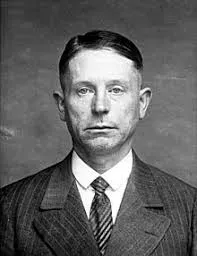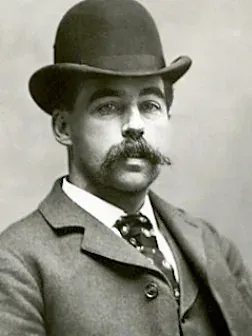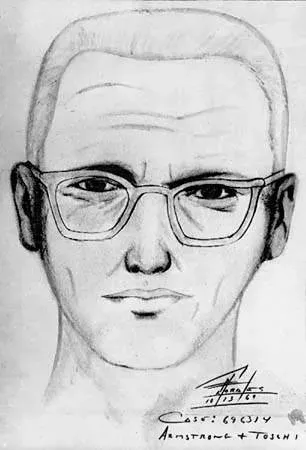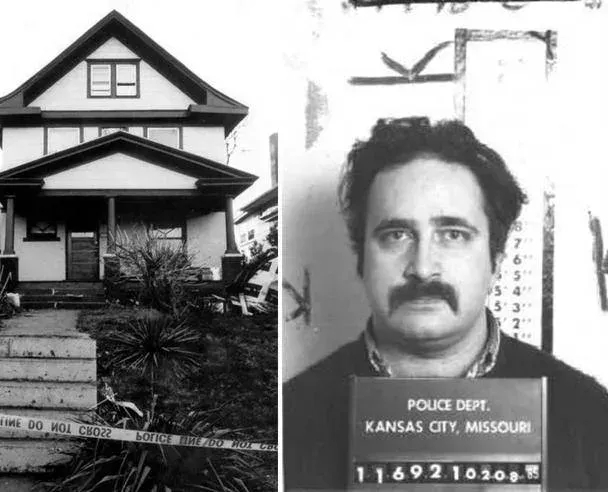Peter Kürten: Il Vampiro di Düsseldorf
Peter Kürten: The Vampire of Düsseldorf
In the darkness of criminal history, some figures emerge as dark and frightening incarnations of evil. One of these is Peter Kürten, known as “The Vampire of Düsseldorf”, a serial killer who terrorized Germany during the 1920s with a series of brutal and bloody murders. His story is a tangle of horror, twisted psychology and the constant clash between good and evil.
Peter Kürten’s Childhood
Peter Kürten was born on May 26, 1883 in Mülheim am Rhein, a town in North Rhine-Westphalia, Germany. His childhood was marked by violence and abuse. Growing up in a dysfunctional family, he was exposed to a series of traumas and violence that shaped his psychological development in deeply distorted ways. He witnessed domestic violence between his parents and was sexually abused by adults in his neighborhood. These traumatic events had a devastating impact on his psyche, laying the foundation for his future criminal behavior.
Early Signs of Deviance
 From a young age, Kürten displayed signs of deviance and sadism. He engaged in petty theft and vandalism, but these behaviors soon evolved into something much more sinister. At the age of nine, Kürten began sexually abusing animals, an early sign of his deep-seated psychological disorders.
From a young age, Kürten displayed signs of deviance and sadism. He engaged in petty theft and vandalism, but these behaviors soon evolved into something much more sinister. At the age of nine, Kürten began sexually abusing animals, an early sign of his deep-seated psychological disorders.
Kürten’s Criminal Career
Kürten’s criminal career really took off in the 1920s, when he committed a series of brutal and bloody murders that would shock the nation and make headlines around the world. His modus operandi was disturbing and macabre: he attacked mostly women and children, raping them before killing them with a sharp weapon. His crimes were characterized by unspeakable ferocity and cruelty, so much so that he earned the nickname “The Vampire of Düsseldorf”.
The Victims
- Christine Klein (1913)
- Age: 9 years old
- Location: Köln (Cologne)
- Details: Christine was strangled and stabbed by Kürten. This was one of his first murders, when she was only 30 years old.
- Gertrude Franken (August 13, 1929)
- Age: 18 years old
- Location: Düsseldorf
- Details: Gertrude was stabbed by Kürten on her way to work. She survived the initial attack but died shortly after in hospital.
- Maria Hahn (August 24, 1929)
- Age: 19 years old
- Location: Düsseldorf
- Details: Maria was strangled and stabbed repeatedly. Her body was later found, partially buried.
- Ida Reuter (September 25, 1929)
- Age: 37 years old
- Location: Düsseldorf
- Details: Ida was stabbed to death by Kürten while walking down the street. She died from her wounds.
- Elizabeth Dorrier (September 30, 1929)
- Age: 22 years old
- Location: Düsseldorf
- Details: Elizabeth was another victim stabbed by Kürten.
- Gertrude Hamacher (February 11, 1929)
- Age: 8 years old
- Location: Düsseldorf
- Details: Gertrude was one of Kürten’s youngest victims. She was strangled and stabbed while returning from school.
- Louise Lenzen (October 29, 1929)
- Age: 14 years old
- Location: Düsseldorf
- Details: Louise was attacked and killed by Kürten while returning home. She was stabbed repeatedly.
Attempted Murder and Assaults
- Mechthild Kuch (1929): Mechthild, aged only 8, was stabbed by Kürten but miraculously survived the attack.
- Gertrud Albermann (5 November 1929): Gertrud, aged 5, was killed and buried in a field by Kürten.
Victims Assaulted but Survived
- Maria Budlick (1930): Maria survived an attack by Kürten and contributed decisively to his capture, identifying him as her attacker.
Total Number of Victims
Peter Kürten confessed to killing at least 9 people and attempted to kill 7 more, but it is suspected that the true number of his victims may have been higher. Many of the crimes remained unsolved or unattributed to him until his confession.
Arrest and Trial
Despite his efforts to evade capture, Kürten was finally arrested in 1931. During his trial, he publicly confessed to his crimes, revealing chilling details of his atrocities. He was sentenced to death for nine murders, but the true number of his victims may have been much higher. During his trial, Kürten provided shocking details of his crimes, revealing a twisted and remorseless mind.
A Reflection of Society
Peter Kürten’s story raises uncomfortable questions about human nature and the society in which he lived. His crimes indicate a profound psychological deviance, but also a reflection of the turbulent times in which he lived. Germany in the 1920s was marked by the devastation of World War I and growing political and economic instability. In a context of despair and social disintegration, a monster emerged, fueled by his own obsessions and inner demons.
His Final Fate
Peter Kürten was executed on July 2, 1931 for his crimes. His execution ended his brutal criminal career, but his name will forever be associated with the terror and horror he inflicted on his victims. His story remains a dark reminder of the human capacity for unspeakable acts of violence and depravity, and of the constant struggle between good and evil that resides within each of us.
Conclusion
The story of Peter Kürten, the Vampire of Düsseldorf, is a dark chapter in world criminal history. Through his brutal and bloody actions, Kürten embodies absolute evil, a dark shadow that looms over the fabric of civil society. His life and crimes remain a mystery shrouded in darkness, a perennial reminder of the fragility of the human condition and the demons that lurk in the human soul.
Subscribe to our channel YouTube







